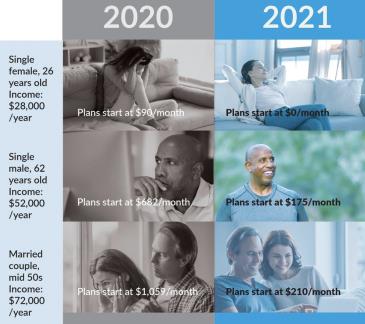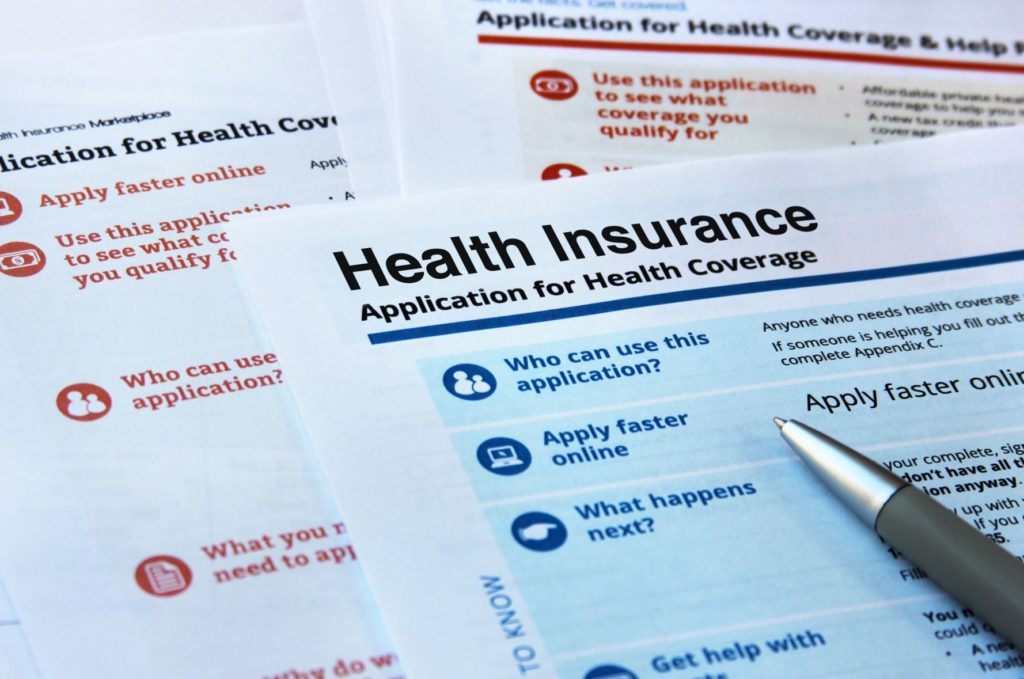
Open enrollment for the Affordable Care Act begins in one month.
It’s an option to consider to help the staff at your child care center find health insurance, a benefit that many people are looking for as they seek employment.
But insurance can be difficult to understand and finding the right plan, at the right price, can be difficult.
“Health insurance can be extremely complicated, and I tell people it’s almost like learning a second language,” said Jeremy Smith, a program director and outreach coordinator for First Choice Services who serves as a health care navigator.
In a recent Early Childhood Investigations webinar sponsored by Procare Solutions, he and Louise Stoney, co-founder of Opportunities Exchange, discussed options for health insurance for daycare staff.
COVID-19 Stimulus Plan Makes Insurance More Affordable
The American Rescue Plan Act, better known as the COVID-19 stimulus package, put money into the ACA, making insurance more affordable, Louise said.
Stabilization grants through that plan can be spent on insurance premiums and health savings accounts or health reimbursement accounts (more on both of those later).
And according to healthaffairs.org, the plan makes significant changes to bolster the ACA and improve marketplace access and affordability by:
- Extending ACA subsidies to higher-income people who did not qualify for 2021 and 2022;
- Increasing ACA subsidies for lower-income people who already qualify for 2021 and 2022;
- Providing maximal ACA subsidies for those who receive unemployment benefits in 2021; and
- Preventing taxpayers who misestimated their income in 2020 from having to repay excess premium tax credits at tax time.
Jeremy said he is telling people that if they’ve checked the ACA marketplace in past years and found it unaffordable, now is the time to check again on rates.
“A lot more people qualify now and the prices have gone down,” he said, and showed this slide to compare this year versus last year:

Health Care Navigators
So how do you figure out what is the best plan for you and help your staff? Enlist the help of a health care navigator, which is a person or organization trained to help consumers, small businesses and their employees as they look for health coverage options through the ACA marketplace.
Navigators can help complete eligibility and enrollment forms and are required to be unbiased.
Jeremy has been a navigator since 2013 and has worked with child care centers.
“I explain it as being a cross between an insurance agent and a social worker,” he said of the role.
He said the navigator program, which is free, is expanding nationwide. Beyond helping with ACA coverage, navigators can help determine if a person qualifies for expanded Medicaid coverage or the Children’s Health Insurance Program known as CHIP that provides health coverage to kids through Medicaid and other programs.
He said navigators are here to answer questions and are not advocating for any course of action.
This year, 60 organizations were funded to serve as health care navigators. To see a list of those organizations by state, click here. And remember that navigators are required to assist anyone seeking help, regardless of address.
Find a way to partner with navigators, Louise said, and look into whether you can tap federal coronavirus stimulus money.
Doctors by Phone

Telehealth plans, in which doctors and other health providers such as therapists are available virtually, are an affordable option, Louise said.
Through ECE Shared Resources, a doc-by-phone plan is available for $80 a year.
Louise says she purchased such a plan for herself and likes being able to call a doctor 24 hours a day, seven days a week. Doctors are able to call in prescriptions, saving the time and money of a visit to an office.
“It is hugely affordable and super convenient,” she said.
Health Care Savings Accounts
Child care centers are able to put money available from the COVID recovery funds toward these accounts that are linked to high deductible insurance plans. Such plans are available through the health care exchanges.
People sometimes shy away from high deductible plans. But Louise said it’s important to remember that many people, including herself, never hit even a low deductible.
Health care savings accounts are a place for you to put away tax-free money and use it for doctor’s visits. The best part?It stays with you year after year.
“It’s a way to help young staff people in child care programs build some assets,” she said, saying that if 10 years from now a staff member needs the money for a health expense, the unused money is there for them.
Health Reimbursement Accounts
Health reimbursement accounts, also referred to as health reimbursement arrangements, are employer-funded group health plans from which employees are reimbursed tax-free for qualified medical expenses up to a fixed dollar amount per year.
You may have employees who are married to someone with insurance, Louise said, and offering these accounts is a way to help those employees pay for health costs.
It’s a way to reimburse employees for out-of-pocket medical expenses and health insurance premiums, and does not require a linked high-deductible health insurance plan.
Funds can roll over and don’t have to be spent in the plan year, but Louise said the money typically does not follow employees if they leave.
Child care center owners and directors can tap federal COVID-19 money to fund this type of an account for employees.
Preparing to Apply

Open enrollment for 2022 for insurance through the Affordable Care Act runs from Nov. 1 through Jan. 15. Enroll by Dec. 15 for coverage that starts on Jan. 1.
To apply for health coverage on the ACA marketplace, you need to be able to estimate your income for the year you’re seeking coverage. Helpful documents include pay stubs, a copy of last year’s tax return and a profit/loss statement. Procare Solutions has a profit/loss module in its system that allows you to run a report.
Louise encouraged daycare owners and directors to think strategically about how to maximize opportunities and send staff to the ACA.
“We need to help them do this in a supportive way and explain to employees it’s improving their access to insurance,” she said.
See if a navigator can come to your child care center and arrange for one-on-one meetings with staff members. And if you’re also looking at group insurance, find a reputable broker or private insurance agent and compare rates with the ACA.
Running the business side of your child care center is time-consuming and often complex. Procare Solutions offers easy-to-use software to manage every part of your child care business through automation.
Automation not only saves you time, but it helps with hiring and retaining staff. Check out this short video to see how!
Interested in learning more? Request a free demo today!


